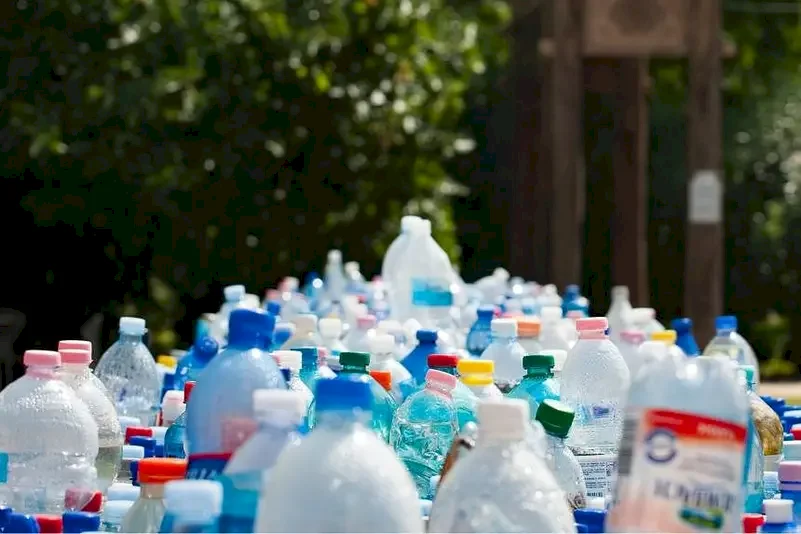
מחקר: אלה נקודות החמות הגלובליות לזיהום פלסטי
SadaNews - Waste plastic and its micro-particles are polluting coastlines around the world, with new research showing stark regional differences in types and concentrations of plastic globally.
A study conducted by the University of Portsmouth published in the journal Environmental Monitoring and Assessment examined nearly 59,000 pieces of plastic to map global coastal pollution patterns.
The study used data from the large survey of microplastic (BMS), which analyzed 1,089 surveys conducted by volunteers in 39 countries between 2018 and 2024.
The study revealed that pre-production plastic pellets were the most common type of plastic, with the Netherlands recording the highest numbers, 14 times higher than the second most affected country, primarily due to a shipping container disaster.
Bioplastics, widely used in wastewater treatment, were densely concentrated in the Netherlands and Honduras, while Britain ranked third based on average counts per sample.
In contrast, secondary plastics, which are fragments that break down from larger materials, were more common in Kenya and Honduras, and expanded polystyrene (a lightweight solid plastic) was most prevalent in Thailand, Indonesia, and Portugal; throughout all countries, white plastic dominated, followed by transparent or opaque plastics, and then blue and green.
Alongside pollution data, the study demonstrated how citizen science can be applied on a global scale. More than a thousand people registered to participate in the project from 66 countries, with Britain, the United States, and Australia being the most involved.
In successful project cases, they were often managed by non-governmental organizations, which proved to be the most effective contributors and were often responsible for the bulk of surveys in their regions.
Global Crisis
Lead author Dr. David Jones from the University of Portsmouth stated, "Our results show that plastic pollution is not just a local issue but a global crisis, with different regions facing varying challenges, and thousands of volunteers participated in the large microplastic survey, demonstrating the ability of citizen science to gather data at a scale that traditional methods alone could not achieve."
The research highlights the increasing importance of citizen science in supporting international efforts to tackle plastic pollution. In 2022, the United Nations Environment Assembly agreed to a legally binding treaty to end plastic pollution, urging member states to improve monitoring and reporting; the treaty is still under negotiation.
Dr. Michelle Hill, head of the School of Environment and Life Sciences at the University of Portsmouth, noted, "Although the data collected by volunteers is limited, citizen scientific research is capable of filling critical gaps, especially in areas where environmental monitoring resources are limited, and it contributes to building community engagement, a vital step in addressing plastic pollution from its source."
The study concluded that combining citizen science with traditional scientific methods can provide the most effective approach to tracking the spread of microplastics and shaping policies to reduce them.
Studies indicate that plastic pollution has risen sharply in recent decades, producing about 450 million tons of plastic annually, half of which is used only once, and less than 10% is recycled. Plastic waste spreads from the summit of Mount Everest to the deepest trench in the Pacific Ocean, the Mariana Trench.
According to studies, plastic production has increased more than 200 times since 1950 and is projected to triple again, reaching over a billion tons per year by 2060.
While plastic has many important uses, the fastest increase has been in single-use plastics, such as beverage bottles and fast-food containers.
More than 98% of plastic is made from fossil oil, gas, and coal, and over 16,000 chemicals are used in its production. This energy-intensive production process exacerbates the climate crisis, releasing the equivalent of two billion tons of carbon dioxide annually, more than Russia’s emissions, the fourth largest polluter in the world.
Plastic production also causes air pollution, as more than half of unmanaged plastic waste is burned outdoors, according to the study, in addition to contaminating soil, forests, and oceans and increasing warming, undermining their role in carbon absorption.
Source: الجزيرة + وكالات

נוסף - מתבגרים מעדיפים לשוחח עם רובוטי צ'אט על פני בני אדם

בגודל של גרגר חול... רובוט שיכול להיכנס לזרם הדם ולהעביר תרופות בדיוק

הביקוש הגבוה לשבבי זיכרון עשוי להעלות את מחירי הסמארטפונים... מה הסיפור?

«טיקטוק» מאפשר למשתמשיו להפחית את התוכן המיוצר על ידי בינה מלאכותית

מחקר: עישון סיגריה אחת ביום פוגע בלב בכל הרמות

כישלון משגר ראשון של רכב החלל המפותח "ספייס איקס" במהלך הבדיקה

שקדים או פיסטוק: מה מהם טוב יותר לבריאות הלב ורמות הסוכר בדם?

